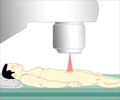Prostate cancer can develop in one type of stem cell, then evolve to be maintained by a stem cell that looks very different, making prostate cancer stem cells a moving target for treatments, find researchers.

Adult stem cells are tissue-specific regenerative cells that replace diseased or damaged cells in the body's organs.
Researchers found that tumours can start in basal stem cells that evolve to luminal-like cells. This means that the source of the disease they wish to target with therapy - the tumour stem cell - can change over time.
"People have begun to think about cancers as being driven by stem cells in the same way that many of our adult organs are maintained by dedicated stem cells," said Goldstein, "based on this new understanding, a lot of excitement surrounds the concept of going right to the root of the tumor and targeting those stem cells to eradicate the cancer."
In patients with aggressive prostate cancer who are being treated with anti-androgen therapy, the basal stem cells that start the cancer look different from the luminal cells that maintain the aggressive disease, and in turn the tumour stem cells that remain after the anti-androgen treatment look different from the previous two.
This means that for targeting treatments, researchers need to identify cell types that evolve as the disease and its treatment progress.
Advertisement
Source-ANI

![Prostate Specific Antigen [PSA] & Prostate Cancer Diagnosis Prostate Specific Antigen [PSA] & Prostate Cancer Diagnosis](https://images.medindia.net/patientinfo/120_100/prostate-specific-antigen.jpg)












